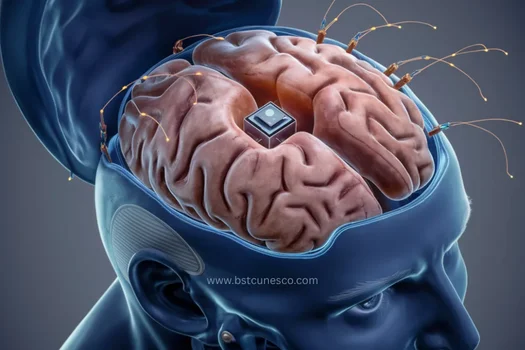Neuralink chipsets, one of the most advanced technologies of the 21st century, are designed as a brain-computer interface (BCI) that can be implanted in the human brain. This revolutionary technology, developed by Elon Musk and his team, is primarily intended to help people who are physically disabled and unable to use their arms and legs. But the applications of this technology go far beyond this scope and could transform the future of human interaction with technology.
Invisible and user-friendly design
One of the outstanding features of Neuralink chipsets is its invisible and compact design. The device is designed to be almost undetectable once implanted in the brain, allowing users to control their computer or mobile device from anywhere. This feature has its own appeal not only for people with disabilities, but for all users.
Simple and minimally invasive implantation process
To implant this advanced implant, only a 2mm incision is required in the skull. This minimally invasive and rapid procedure is performed by precision surgical robots, minimizing the risks associated with surgery. The Neuralink implant is housed in a biocompatible housing that is highly resistant to the physiological conditions of the human body. This housing not only protects the implant, but also ensures that the device works continuously and without causing problems in the body.
Wireless charging and ease of use
Another attractive feature of Neuralink is its wireless charging system. The device is charged by a small battery that works inductively and through a small charger. This capability makes it very easy and user-friendly to use the device anywhere without the need for a physical connection.
Neural Signal Processing and Wireless Transmission
Neuralink chipsets are equipped with low-power electronic chips that are capable of processing neural signals from the brain. These signals are transmitted wirelessly to the Neuralink application and are ultimately converted into actions and commands understandable to external devices. This complex but fast process allows for the control of various devices just by thinking.
Recording neural activity with high precision
Neuralink is able to record neural activity through 1,024 electrodes distributed over 64 strands. These extremely flexible and thin strands are key to minimizing possible damage during and after implantation. This precise and advanced design ensures that the device works safely and effectively in the brain.
Restoring independence to people with disabilities
Neuralink’s main goal is to create a generalized brain interface that can restore independence to people whose medical needs are not met. The technology could help people with disabilities regain control of their lives and carry out everyday activities.
A Bright Future for Neuralink
While some critics say Neuralink’s ambitious goals are far from being realized, Elon Musk believes that the technology will outperform the metaverse in the long run. Not only could Neuralink help people with disabilities, it could also completely change the way humans interact with technology, opening up a whole new world of possibilities.
Summary
By combining advanced technology and user-friendly design, Neuralink chipsets represent a bright future for human-machine interaction as a brain-computer interface. This technology will not only help people with disabilities, but it could also impact the lives of all of us. With further developments in this area, Neuralink could become one of the most important inventions of the century. For more information on the new technology, visit bstcunesco.com.
Given these advances, Neuralink is not just a medical technology, but a giant step towards a future where humans and machines work in harmony and seamlessly.
Resources:

